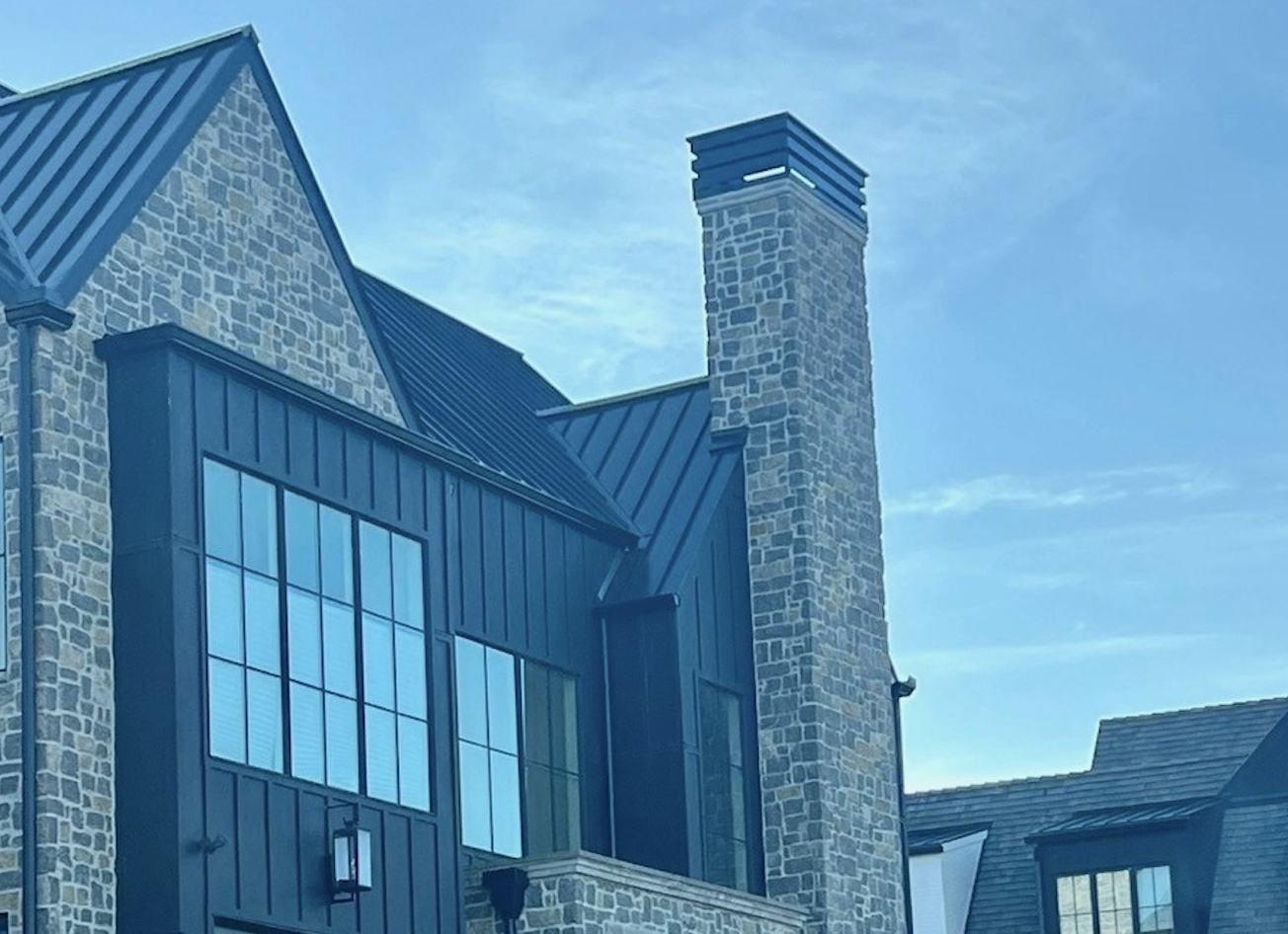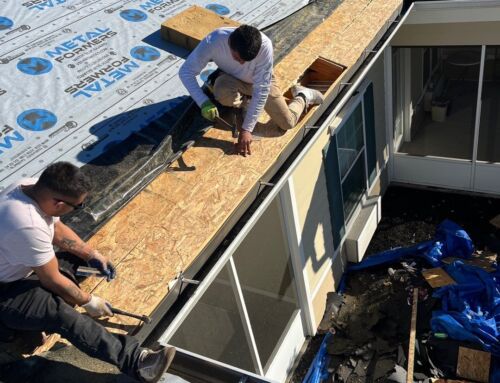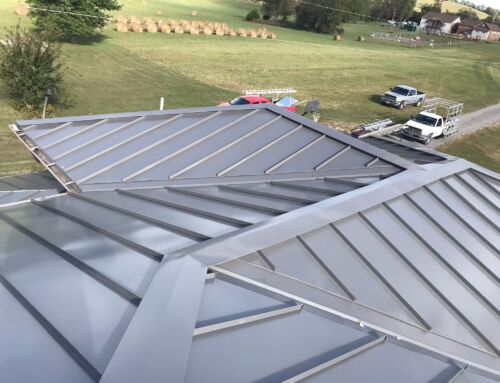Installing chimney caps is a unique and nuanced process, as it is not a one size fits all situation. It is important to consider not only the size, shape, and material of the chimney cap, but also the chimney itself. A certain type of chimney cap can be installed differently than another type.
This article serves as a way to convey information about how to place and install a chimney cap the correct and proper way, to ensure lasting durability. With this in mind, it is always a smart idea to leave the installation process of a chimney cap to a certified professional, like a skilled chimney contractor.
What is a Chimney Cap?
A chimney cap is what is placed above the top of a chimney crown. They can be made of different kinds of material such as stainless steel, copper, steel, and aluminum. In the same way they can be made of different materials, they can also be shaped and designed differently, too.
We have previously discussed the difference between two of the top chimney cap materials, but also discussed the importance of having a chimney cap on your chimney.
Whichever chimney cap material or type is selected, it is crucial to be aware of how each is installed differently. If not installed correctly, then you may have a bigger issue on your hands such as time lost, damage done, and more money spent!
The Importance of Chimney Caps
If you have a chimney it’s best to also have a chimney cap. Chimney caps protect not only our chimney, but also your roof and home as whole. Without a proper chimney cap, or properly installed chimney, you can be opening up your home to a variety of issues such as:
- Animals
- Bug or insect infestations
- Possible fire hazards
- Potential water damage
Different Kinds of Chimney Caps
Chimney caps come in a variety of shapes and sizes to better suit any chimney. Some common types of chimney caps include:
Custom Chimney Cap
Custom chimney caps are exactly what they sound like, a type of cap designed and made specifically for a chimney. This type can be made specifically for a certain client who is wanting extra protection from certain types of weather concerns or environmental concerns based on their area. They will also be more specific in size to fit the exact shape and size of the chimney.
Pros
One major perk with a custom chimney cap is that you can be more sure the installation process will be smooth. There will be little to no concern that a custom chimney cap will not fit just right with the chimney, because the dimensions and proportions will be exact! Since this type of cap is custom, the material should more than likely be a specific, chosen material to better protect the chimney with potential weather conditions in mind.
Cons
While it may be seen as a benefit that custom chimney caps will have an easier installation process due to an exact dimension match, it may require a more skilled contractor to install this cap. Because custom chimney caps are each distinctive the contractor may not always be familiar with how to install these caps due to their uniqueness. Custom chimney caps may also be higher in price based on the customization, and could take longer to make in production.
Installation
Installation for a custom chimney cap will vary based on how the cap is crafted, and extras it may include. This is why it is best to leave the installation process of a custom chimney cap to a professional and skilled chimney contractor.
Single Flue Chimney Cap
A single flue chimney cap is commonly used for single flue chimneys. These types of chimney caps are very common to see on top of homes, and are more affordable than other chimneys.
Pros
One benefit to a single flue chimney cap is that it can range in price based on material and what a client may want to add to their cap. Since single flue chimney caps are popular, they make for a fairly smooth installation process.
Cons
While single flue chimney caps are affordable and more accessible than other caps, they can come in poorly made material and may not offer the best longevity as a chimney cap. This could lead to further maintenance of the cap or repairs. Again, it would be beneficial to select a stronger quality material for a single flue chimney cap to provide better longevity.
Installation
Since single flue chimney caps are more common, the installation can be simple for most professional contractors. First, the certified chimney installer will want to ensure that the single flue chimney cap is the right dimension for the specific chimney. From there, they will place the single flue chimney cap over the chimney then secure the cap to the chimney with the installation bolts.
Multi-Flue Chimney Cap
Another common chimney cap is the multi-flue chimney cap which is used to protect and cover chimneys with two or more flues. Similar to the single flue chimney cap, these caps can come in different sizes and materials.
Pros
The benefits that come with a multi-flue chimney cap are similar to single flue chimney caps as both come in an assortment of materials. Additionally, this cap covers multiple chimney flues, so you don’t necessarily need to purchase multiple chimney caps to cover individual flues, only one multi-flu to cover them all.
Cons
One downside of multi-flue chimney caps that clients should consider is the price of these caps. Since they are larger they are often priced higher than a single flue chimney cap. In addition, the installation process can be more challenging, and expensive, due to the heaviness of most multi-flue chimney caps.
Installation
Since multi-flue chimney caps are rather heavy and large, it is best to leave the installation to a certified professional who has years of experience with these types of installations. Typically they will install this cap by attaching the cap to the chimney crown, not directly to the flue or chimney. They will check to make sure the cap is not hanging too far off the crown, and then mark where the screws will need to be placed. From here the contractor will screw the installation screws in and ensure that the cap is properly installed, and not overtightened.
Tools Needed to Install a Chimney Cap
For a successful installation there are a few tools that professional contractors will use to ensure any chimney cap is placed properly. Some of these tools are:
- Power Drill
- Proper Installation Screws
- Measuring Tape
- Safety Gear
Final Thoughts on Chimney Cap Installation
Since installing a chimney cap can more than often be complex due to different shapes and sizes of chimneys, it is usually wise to hire a certified professional with plenty of experience. With their extensive knowledge and experience, you won’t have to worry as much for possible errors during installation.
Even if someone feels comfortable with home improvement projects, chimney caps can be challenging even to the most seasoned home owner and fixer upper. A professional chimney contractor will be able to determine the correct steps to take for the installation while also ensuring their safety and the integrity of your chimney.
Chimney Caps at Metal Formers in Nashville, TN
At Metal Formers in Nashville, TN we offer a variety of chimney caps for any of your client’s needs. It is beneficial to ensure that you’re sourcing proper materials and parts for any chimney cap projects. If you’d like to take a look at our options, then visit our website or contact us online.
Or if you’re ready to place an order for a chimney cap you can do so by placing an order with our online chimney cap order form.
If you have any questions please feel free to connect with us. We look forward to hearing from you, and providing you with the materials you need for your upcoming home or commercial projects!





Leave A Comment